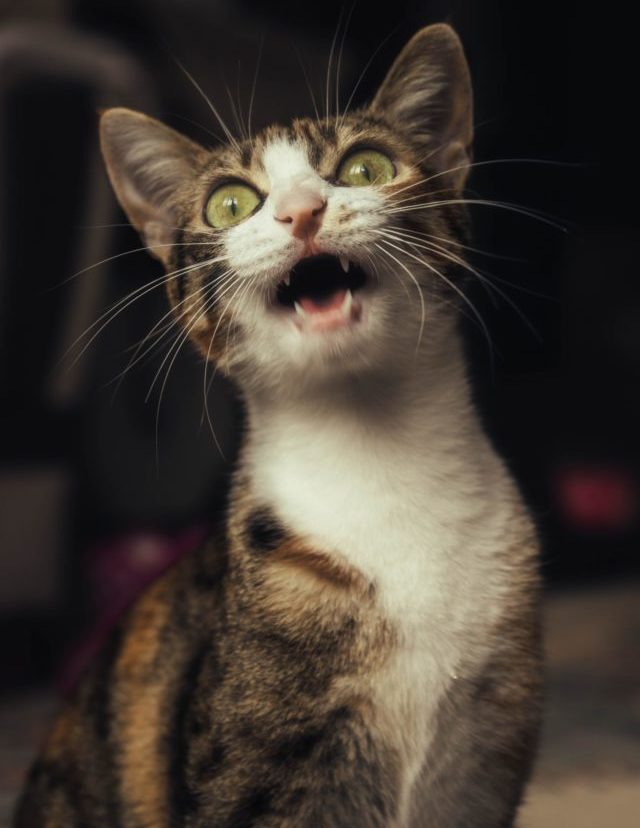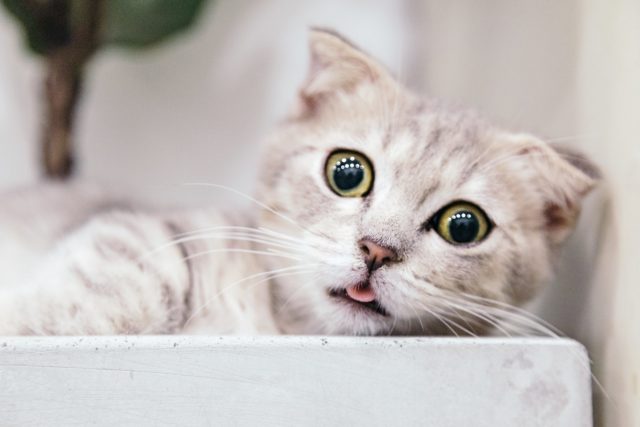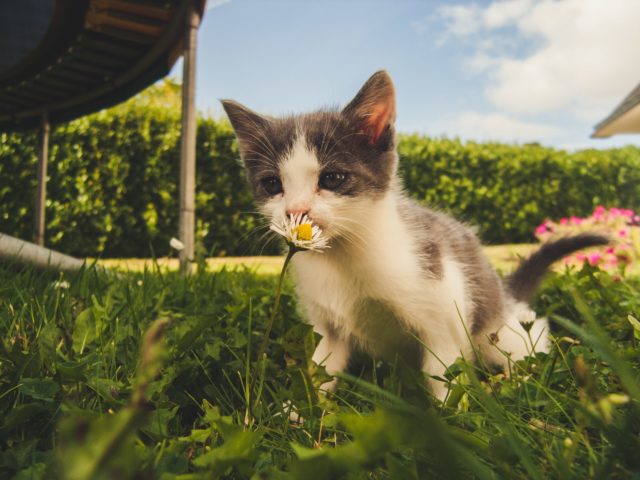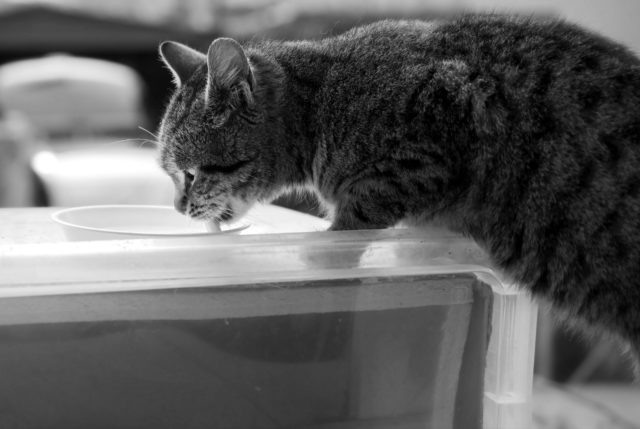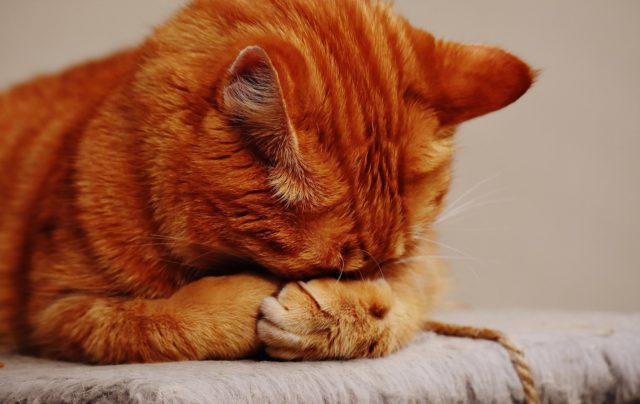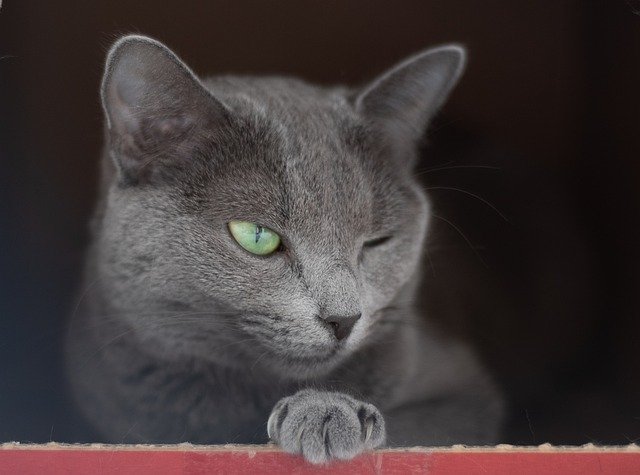If you suffer from allergies, then you’re more than aware of the runny nose that always drips, the nagging cough of an itchy throat, and the watery eyes that somehow feel like their full of grit. And, while the spring is springing or whatever triggers your sneezing fits are finding you, know you’re not alone.
Not only do humans suffer from allergies, but cats also do too.
Perhaps your kitty is a sneezy puss. Or maybe she can’t stop scratching. You realize something is going on, but cats can’t tell us when they feel wrong. Well, they can, but not in the way we speak and tell each other something is causing us to feel bad. Our sweet ones tell us things by using small signals, and it’s the same with allergies in cats too.
To be a dramatic species, cats hide illness well, but PetMD offers us a list of symptoms to look for in a cat with allergies:
- Sneezing, coughing, and/or wheezing
- Chewing, licking and scratching itchy skin
- Watery, runny eyes
- Itchy back or tail base (most commonly seen in flea allergies)
- Dirty ears and ear infections
- Vomiting and diarrhea
- Unusual snoring
- Chewing at paws and swollen paws
Sneezing and coughing can be more apparent symptoms of an allergy problem as cats are big-time groomers. When we see them licking their fur or chewing at their jellybeans, it’s easy to think they’re just bathing into perfection. But, when red spots and hair loss are present, it’s more than a want of being clean. Something is aggravating kitty’s immune system.
Most Common Allergy Triggers in Cats
When you’ve realized your cat is displaying allergy symptoms, its time to figure out what’s making their immune systems go wonky.
From environmental to food, here are the most common allergens in cats.
1. Fleas
The combination of cats and flea allergies is a common one. In fact, fleas are the number one cause of allergies in cats. Flea bites can bring on a case of allergy dermatitis capable of driving your kitty cat crazy.
The itchy skin arises thanks to flea saliva transferred during a bite, and “in an allergic cat, just one bite can result in intense itching that can last for days,” according to veterinarians Dr. Tammy Hunter and Dr. Ernest Ward.
Look out for angry patches of skin and hair loss as the main symptoms of flea allergies in cats.
Prevention is the best way to get ahead of potential flea allergies in cats, but fleas can be invasive jerks that often find a way into cat coats no matter how much we stay on top of flea prevention medicines. So even if your cat is on flea prevention, but still scratching more often than usual, have a look through their fur and see what’s going on. You may not catch a glimpse of one of the pesky bugs at first, because cats will overgroom when faced with fleas, but keep checking if your cat keeps scratching.
2. Pollen
Just like us, the blooming of certain trees or plants can make kitties wheeze and sneeze. And also, like us, pollen allergies in cats can be a problem that exists since kittenhood or one that develops out of nowhere at any age.
While we consider only outside cats at risk for seasonal allergy symptoms, we should know indoor cats can suffer too. The allergy, ear, and skin experts at VetDerm.com tell us, “Pollen can enter houses on our clothes and through open windows, making cats with a completely indoor lifestyle susceptible to pollen allergies in addition to cats that spend any amount of time outdoors.”
Pollen allergies in cats can manifest as sneezing, coughing, and watery eyes. But, cats with pollen allergies also tend to develop rashes that make them scratch like mad. These itchy patches are profoundly uncomfortable, and besides scratching themselves into unhealthy places, the flame of allergen irritation unsettles a cat, which can lead to bad or sad behaviors.
3. Food Allergies
Food sensitivities are the third most common reason for allergies in cats. Usually, a food allergy manifests as skin irritation in the form of “small, pale, fluid-filled lumps on a cat’s skin, which form in response to the presence of an allergen.” These lumps most commonly form on the face and neck but can appear anywhere on a cat’s body. And while the itchy lumps themselves don’t harm a cat, the constant scratching they cause can drive a cat to tear their skin apart, which can lead to infections.
Vomiting and diarrhea are also symptoms of food allergies and intolerances.
And like other allergies in cats, food sensitivities can form at any time in a cat’s life.
“We don’t know why this allergy develops,” reports Carolyn McDaniel, VMD and lecturer with the Cornell University College of Veterinary Medicine. “A cat of any age can be affected, and it can occur in a cat that has been on the same diet for years.”
If you suspect your cat has developed a food allergy, contact your vet for assistance in starting a “novel diet.” This essentially means trying a portion of food with a different protein source for several weeks. If allergic symptoms fade away, it’s possible that the source of the allergy was indeed something in the cat’s previous food.
Canna-Pet lists the top food allergens in cat food as:
- Beef
- Lamb
- Seafood
- Meat by-products
- Corn
- Wheat Gluten
- Eggs and dairy
- Soy
- Preservatives and artificial coloring
4. Perfumes and Fragrances
With around 200 million scent receptors in a cat’s nose, our fur darlings can smell things we certainly can’t. With such sniffer power, cats can be easily overwhelmed by the perfumes and fragrances found in human products ranging from cosmetics to cleaning solutions. Scented cat litter can also be irritating to a cat’s nose.
And beyond being gassed out, if a cat has an allergy to a certain perfume or fragrance, then the offending scent can become a thing of discomfort. Wheezing, coughing, sneezing, and open-mouth breathing all signal an allergy to an inhaled substance.
Asthma, also known as feline allergic bronchitis, can result from exposure to allergens and, as Fetch by WebMD reports, “occurs when the airways in a cat’s lungs become inflamed due to an inhaled allergen or other substance that stimulates the immune system.”
Be cautious when incorporating new smells in your home. This means everything from candles to soaps, room sprays to detergents. If possible, choose formulas marked unscented or fragrance-free. Kitty dear’s sensitive nose will appreciate it.
5. Household allergies
Like pollen and other outdoor allergy sources, indoor allergens can cause sneezing and coughing in cats. Runny eyes and skin disturbances are also symptoms of cat allergies brought on by indoor sources like dust, mold, and mites. Pinning down the source of an allergic reaction can prove difficult when it comes to indoor offenders.
The best ways to keep kitty’s symptoms at a minimum is regular vacuuming and dusting. Actually, regularly bordering on obsessively would be great if your cat is suffering from allergies. Special filters for air conditioning also help to remove allergens in the home. Wipe-down baths and regular brushings can help, too, as grooming removes much dirt and dust from a kitty’s coat.
6. Drug allergies
Fortunately, cats don’t experience drug allergies often. When they do, hives, itching, and vomiting are common symptoms, but there lies a much greater danger with drug allergies in cats. Anaphylaxis can occur in drug allergies, causing constriction of airways. This can bring about breathing difficulties or even stop respiration altogether. Seizures and even death are also possible.
Be safe and keep your medicines out of paw’s reach. And, when introducing new prescribed drugs to your cat, watch them like a hawk to be sure no reactions occur.
7. Plastic food bowls
With the inundation of plastic in our everyday lives, humans have begun to develop allergies to the human-made substance. As cats are often watered or fed from plastic bowls, kitties are forming these allergies too. Plastic allergies in cats can manifest as chin acne, “solid or pus-filled bumps around their chin,” reports Dr. Jennifer Coates, DVM.
“If you think your cat might be allergic to plastic, try switching to ceramic or glass plates or bowls, but make sure you clean them regularly since the bacteria-laden slime that can form on the bottom is another possible trigger for chin acne.”
How to Help An Allergic Cat
All the sneezing, coughing, and itching of allergies gets old and can dampen kitty spirits.
So, if your cat is struggling with allergy symptoms, schedule an appointment with your veterinarian. There, the doctor will examine your cat’s symptoms and perform skin and blood tests to help identify what’s making kitty sick. Once results are in or conclusions are drawn, the vet will suggest a treatment plan to help your cat get back to their best life. Veterinarians typically prescribe supplements, anti-histamines and immunosuppressive drugs to help quiet allergies in cats.
At home, you can gain some insight into allergen sources by observing what your cat comes in contact with and how he reacts afterward. Your cat will thank you because allergies are the worst!
H/T: www.basepaws.com

